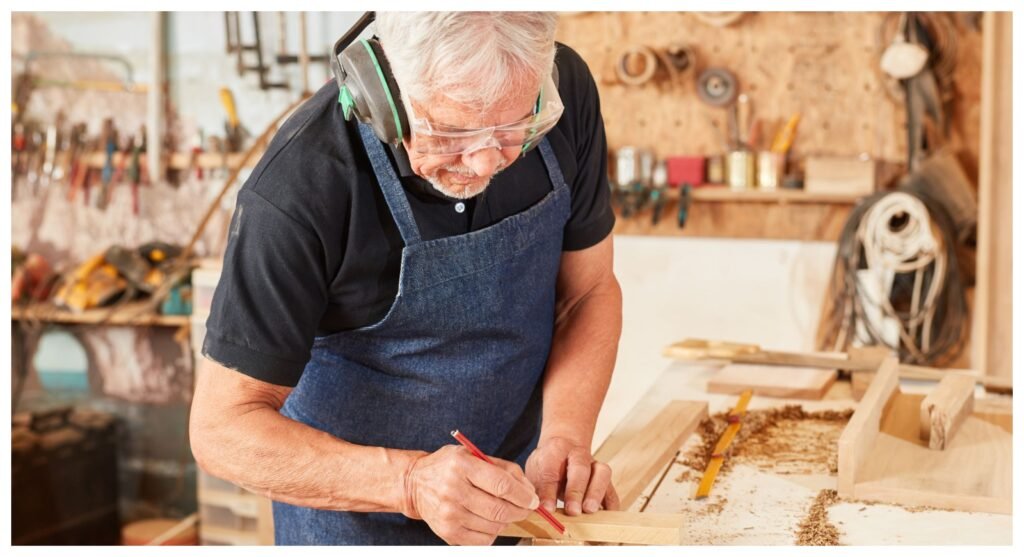Could Your Loved One Be at Risk? Fire Safety in Senior Households Explained
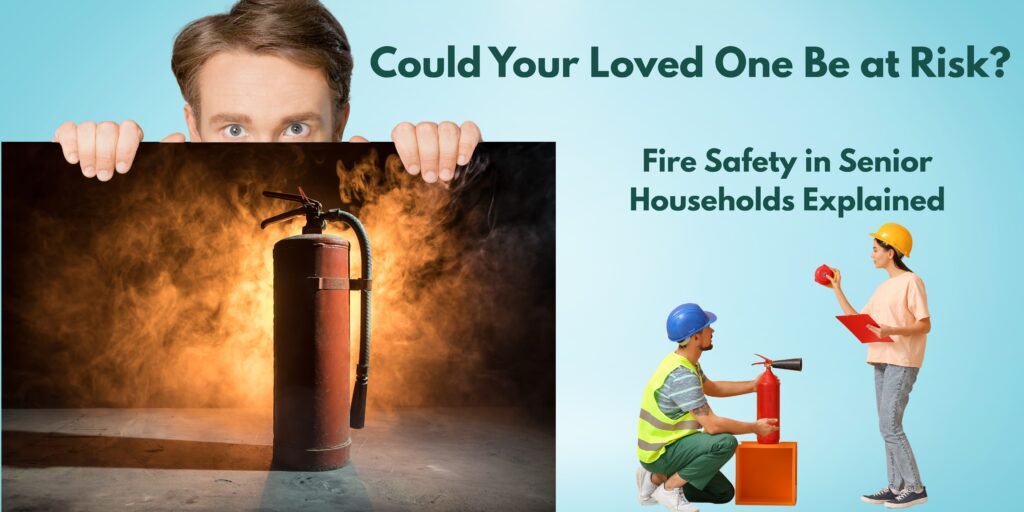
Last Updated on July 7, 2025 by Rose Ann
Is your home really fire-safe — or does it just seem that way? For seniors, home should mean comfort, not concern. Yet every year, thousands of older adults face house fires that could’ve been prevented with a few simple precautions. If you’ve ever wondered whether your home — or a loved one’s — is as safe as it should be, this guide is your wake-up call (minus the smoke alarm blaring at 3 a.m.).
In this article, we’ll explore the unique fire risks mature adults face and what simple, proactive steps can make all the difference. You’ll learn:
- Why age-related factors can increase fire danger
- How to assess your current fire safety situation
- The top culprits behind home fires in senior households
- What tools and gadgets are must-haves in a modern senior-safe home
- And how to turn your fire escape plan from “someday” to “ready today”
You’ll also discover how medications, hearing loss, and mobility issues impact fire safety — and what practical solutions exist to overcome these risks. And if you think you’ve heard it all before, don’t worry this isn’t your typical fire safety checklist.
Let’s take the guesswork out of safety. Whether you’re a senior, a caregiver, or a family member, you’ll walk away with knowledge that could genuinely save lives. So, is your home fire-smart or fire-risky? Let’s find out.
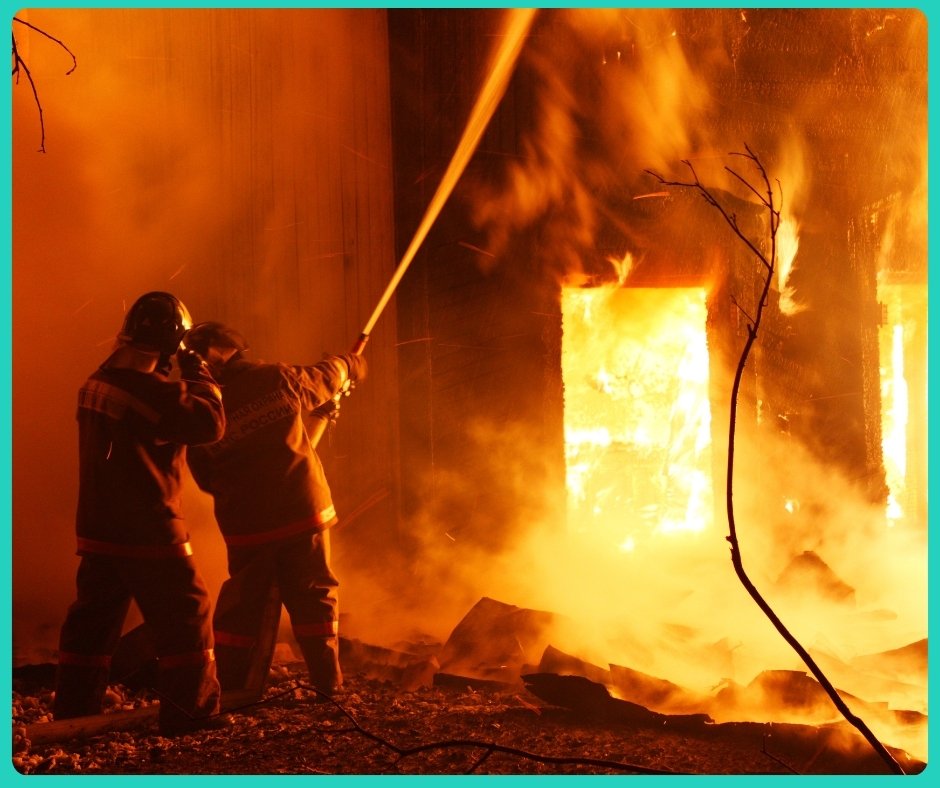
Understanding Fire Safety in Senior Households
Fire safety is a critical concern for older adults, who face unique challenges that can significantly increase their risk of fire-related injuries and fatalities. As individuals age, changes in mobility, vision, hearing, and cognitive function can impair their ability to detect and respond to a fire emergency.
Do you know that adults over 65 are at significantly higher risk of injury or death in a house fire compared to younger age groups? According to the U.S. Fire Administration, people aged 65+ are 2.5 times more likely to die in a residential fire. For those over 85, that risk jumps to more than four times the national average. These figures underscore the urgent need for targeted fire safety interventions for seniors.
Why? It’s not just about age — it’s about the natural changes that come with it: reduced mobility, slower reaction time, vision or hearing loss, and certain medications that dull alertness. These factors don’t make anyone helpless — but they do demand smarter planning. Understanding these unique risk factors is the first step toward effective prevention.
Common Hazards in Senior Homes
Several factors contribute to the increased fire risk in senior households:
- Cooking-Related Incidents
- Cooking remains the leading cause of fire injuries among older adults. Unattended cooking, loose clothing catching fire, and grease fires are frequent occurrences. More than half (58%) of cooking fire fatalities between 2017 and 2021 involved individuals aged 55 or older.
- Smoking Materials
- Careless smoking, particularly in bed or when drowsy, is a primary cause of fire deaths among the elderly. Smoking materials are consistently cited as a leading cause of home fires involving older adults.
- Heating Equipment
- Misuse or malfunction of heating equipment, such as space heaters placed too close to combustible materials, faulty furnaces, or the dangerous practice of using ovens for heating, poses a significant threat.
- Electrical Issues
- Older homes may have outdated wiring, and the use of old appliances, frayed electrical cords, and overloaded outlets can lead to electrical fires.
- Mobility and Cognitive Impairments
- Age-related declines in mobility can hinder quick escape during a fire. Impaired vision and hearing can delay the detection of smoke alarms or the smell of smoke. Cognitive changes, including memory loss or dementia, can affect an individual’s ability to recognize danger, remember escape routes, or react appropriately in an emergency.
- Clutter and Hoarding
- Accumulated clutter can provide additional fuel for fires and obstruct escape routes, making evacuation difficult and dangerous.
- Candles and Open Flames
- Unattended candles or other open flames, especially in homes where cognitive impairments are present, can easily lead to accidental fires.
By understanding these specific risks, families and caregivers can take proactive steps to implement effective fire prevention strategies tailored to the needs of older adults.

Effective Prevention and Mitigation Strategies
Implementing proactive prevention and mitigation strategies is paramount to safeguarding seniors from the devastating effects of home fires. These strategies encompass a range of measures, from essential equipment installation to daily safety practices and comprehensive emergency planning.
Essential Equipment and Maintenance
- Smoke Alarms
- Working smoke alarms are the first line of defense against fire. They should be installed on every level of the home, inside each bedroom, and outside all sleeping areas. Regular testing is crucial; alarms should be tested monthly, and batteries replaced at least twice a year. For seniors with hearing impairments, specialized smoke alarms that use flashing lights or bed shakers are highly recommended.
- Carbon Monoxide Detectors
- While not directly related to fire, carbon monoxide (CO) detectors are vital for overall home safety, especially with heating appliances. CO is a colorless, odorless gas that can be deadly, and detectors provide an essential early warning.
- Fire Extinguishers
- Keep fire extinguishers in easily accessible locations, particularly in the kitchen. Ensure that seniors and caregivers know how to operate them. Regular checks of the pressure gauge are necessary to ensure functionality.
- Automatic Shut-Off Devices
- Consider installing automatic shut-off devices for stoves and other cooking appliances. These devices can prevent fires caused by unattended cooking, a common hazard for older adults.
Daily Safety Practices
Cooking Safety. The kitchen is a common site for home fires. To mitigate risks, seniors and their caregivers should always:
- Stay in the kitchen when cooking and never leave cooking food unattended.
- Keep a lid nearby to smother grease fires by carefully sliding it over the pan and turning off the heat.
- Avoid wearing loose clothing that can easily catch fire while cooking.
- Keep flammable items like towels and potholders away from the stove.
- Clean exhaust hoods and ducts regularly to prevent grease buildup.
Smoking Safety. If smoking is unavoidable, it should always be done with extreme caution:
- Smoke outside the home.
- Use large, deep, non-tip ashtrays.
- Ensure all smoking materials are completely extinguished by soaking them in water before disposal.
- Never smoke in bed or when drowsy.
Heating Safety. Heating equipment is a significant fire risk, especially during colder months:
- Have furnaces and chimneys inspected annually by a qualified professional.
- Maintain a clear space of at least three feet between heating equipment (including space heaters) and anything that can burn, such as furniture, curtains, or bedding.
- Never use ovens or other cooking appliances as a source of heat.
- Plug space heaters directly into wall outlets; avoid using extension cords.
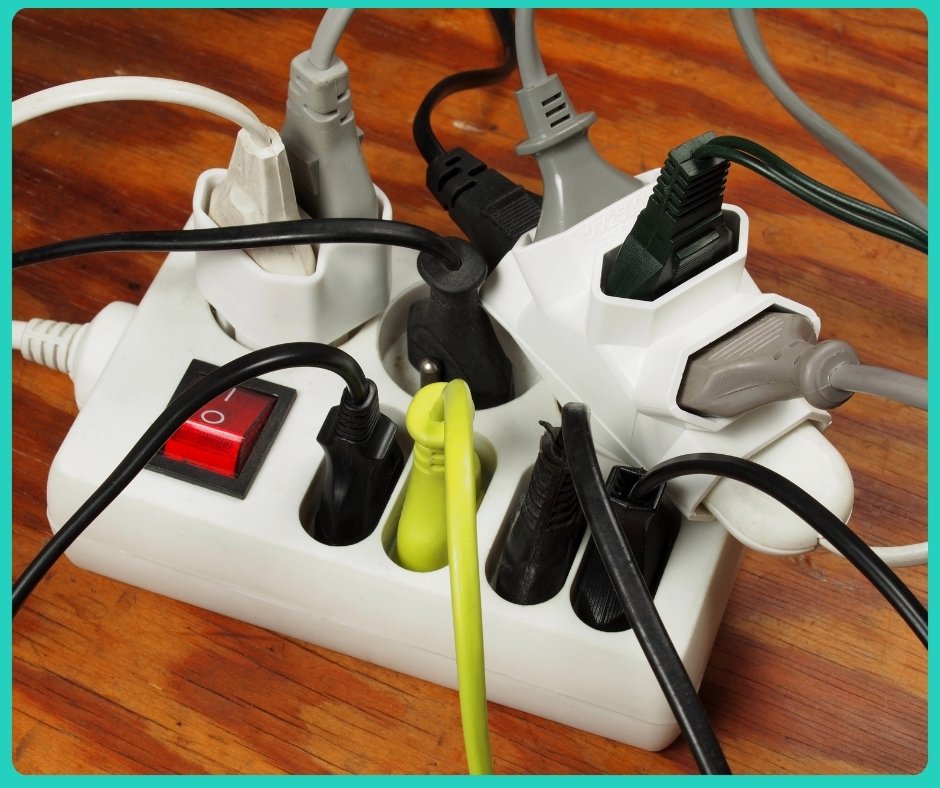
Electrical Safety. Faulty electrical systems and improper use of appliances can lead to fires:
- Regularly inspect electrical cords for fraying or damage and replace them if necessary.
- Avoid overloading electrical outlets. If more outlets are needed, consider having a qualified electrician install additional ones rather than relying on power strips for high-wattage appliances.
- Ensure all appliances are in good working order and replace old or malfunctioning ones.
Home Environment and Accessibility
- Clear Escape Routes
- Ensure that all hallways, stairs, and doorways are clear of clutter and obstructions. This is vital for quick and safe evacuation, especially for individuals with mobility challenges.
- Window and Door Accessibility
- Verify that all windows and doors can be easily opened from the inside. If security bars are present, they must have emergency release mechanisms that are simple to operate.
- Lighting
- Adequate lighting in escape routes can help seniors navigate safely during an emergency, particularly if power is lost.
Emergency Preparedness and Planning
- Fire Escape Plan
- Develop and regularly practice a home fire escape plan with all household members and caregivers. This plan should include at least two ways out of every room and a designated outdoor meeting place.
- Assistance for Evacuation
- If a senior cannot escape independently, designate a specific person to assist them during a fire. This plan should include backup individuals in case the primary helper is not home.
- Communication
- Keep a telephone near the bed with emergency contact numbers readily available. If trapped by fire or smoke, this allows communication with emergency services.
Do not re-enter a burning building for any reason.
Innovative Technologies for Enhanced Safety
Advancements in technology offer promising solutions to further enhance fire safety for seniors, addressing some of the unique challenges they face. These innovations provide earlier detection, improved communication, and greater peace of mind for seniors and their caregivers.
- Smart Smoke Detectors
- Beyond traditional smoke alarms, smart detectors can connect to home Wi-Fi networks and send real-time alerts to smartphones or other connected devices. This allows caregivers or family members to be immediately notified of a potential fire, even when they are not physically present. Many smart alarms also integrate with flashing lights or vibrating bed shakers, specifically designed for individuals with hearing impairments.
- AI and IoT Integration
- Artificial intelligence (AI) and the Internet of Things (IoT) are revolutionizing fire detection and response. Advanced sensors powered by AI can differentiate between types of smoke and heat, reducing false alarms and providing more accurate and rapid detection. IoT-enabled devices can communicate with each other, creating a connected safety system that can automatically trigger alarms, shut off appliances, or even alert emergency services.
- Automatic Shut-Off Devices
- These devices are particularly beneficial for preventing cooking-related fires. Stove timers and auto shut-off outlets can be installed to automatically turn off appliances after a set period or if they detect a dangerous situation, such as overheating.
- Personal Emergency Response Systems (PERS)
- While primarily known for medical emergencies, modern PERS can be integrated with fire detection systems. In the event of a fire, the PERS can automatically alert a monitoring center, which can then dispatch emergency services and notify designated contacts, providing a crucial layer of protection for seniors who may be unable to call for help themselves.
- Fire-Resistant Materials
- Ongoing research and development in fire-resistant building materials and coatings contribute to creating safer living environments. These materials can slow the spread of fire, providing more time for evacuation.
- Residential Sprinkler Systems
- Although not a new technology, the increased adoption and affordability of residential sprinkler systems are making them a more viable option for senior homes. Sprinklers can extinguish a fire quickly, often before the fire department arrives, significantly reducing the risk of injury or death and minimizing property damage.
These technological advancements, when combined with traditional fire safety practices, offer a robust defense against fire hazards, providing enhanced protection and peace of mind for seniors and their families.
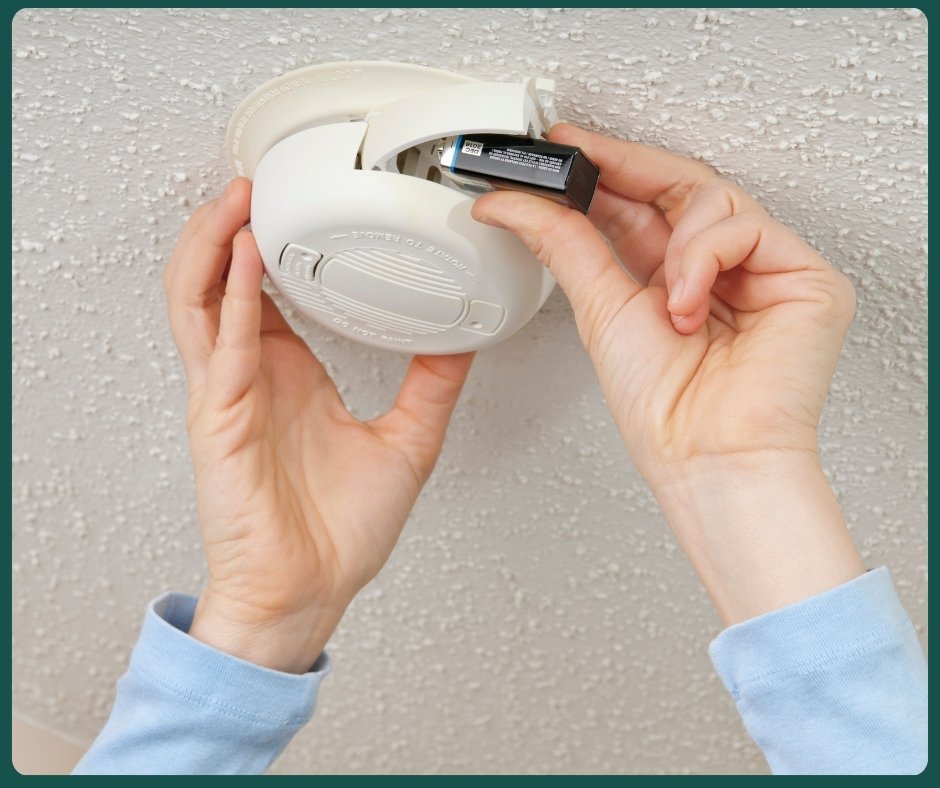
How to Create a Fire Escape Plan That Works: A Senior-Specific Blueprint
When every second counts, a personalized escape plan is your greatest defense. Follow these evidence-based steps:
Step 1: Map Your Sanctuary
- Draw Your Floor Plan: Sketch all rooms, marking:
- Primary exits (doors)
- Secondary exits (ground-floor windows, patio doors)
- Obstacles (stairs, rugs, narrow hallways)
- Measure for Mobility: Ensure exits accommodate walkers/wheelchairs (minimum 32-inch door clearance). Note if window sills are too high for safe climbing.
- Identify “Rescue Rooms”: Choose interior rooms with closable doors for sheltering if exits are blocked.
Pro Tip: Use the NFPA’s free escape plan tool (nfpa.org/escapeplan) to generate a printable diagram.
Step 2: Adapt Drills to Your Abilities
- Practice Quarterly: Rehearse 4x/year during different seasons (e.g., winter = heavy blankets, summer = open windows).
- Night Drills Matter:
- Time how long it takes to locate glasses/meds/aids in darkness
- Practice rolling out of bed low to avoid smoke
- Mobility-Adapted Scenarios:
- Walker users: Practice opening doors while balancing
- Wheelchair users: Test ramps/exit slopes in wet conditions
- Low stamina: Designate rest points (sturdy chairs) along escape routes
Step 3: Clear & Equip Escape Routes
- Pathway Safety:
- Remove throw rugs; secure cords with floor tape
- Install motion-activated path lights (e.g., Energizer Nightlights)
- Exit Accessibility Kit: Store near bed:
- Flashlight with strobe function
- Whistle (3 bursts = distress signal)
- Fire-resistant blanket (for covering during passes through flames)
- Window Solutions:
- Mark emergency release latches with glow tape
- Keep folding escape ladders under beds (test weight capacity!)
Step 4: Build Your Alert Network
| Tech Solution | For Seniors With… | Top Picks |
|---|---|---|
| Medical Alert Pendants | Fall risks | Bay Alarm Mobile GPS |
| Smartwatch Alerts | Tech comfort | Apple Watch Fall Detection |
| Voice-Activated Dialers | Limited dexterity | Amazon Echo Connect + AskMyBuddy |
| Bedside Intercoms | Hearing loss | Clarity Photo Phone XL |
Critical Numbers Protocol:
- Post large-print numbers by every phone:textFIRE: 911 NEIGHBOR: Jane Smith – 555-1234 BUILDING MANAGER: 555-5678
- Program speed-dial buttons with emergency contacts.
Step 5: Activate Your Support Circle
- Neighbor Briefing: Give trusted neighbors:
- A copy of your floor plan with exits marked
- Spare keys in a KnoxBox (fire department access box)
- Details about mobility aids/pets
- Caregiver Training: Require helpers to:
- Practice opening all windows
- Know medication storage locations
- Demonstrate evacuation chair use
- Formalize Check-Ins: Join programs like Care.com Safety Circles for automated welfare checks
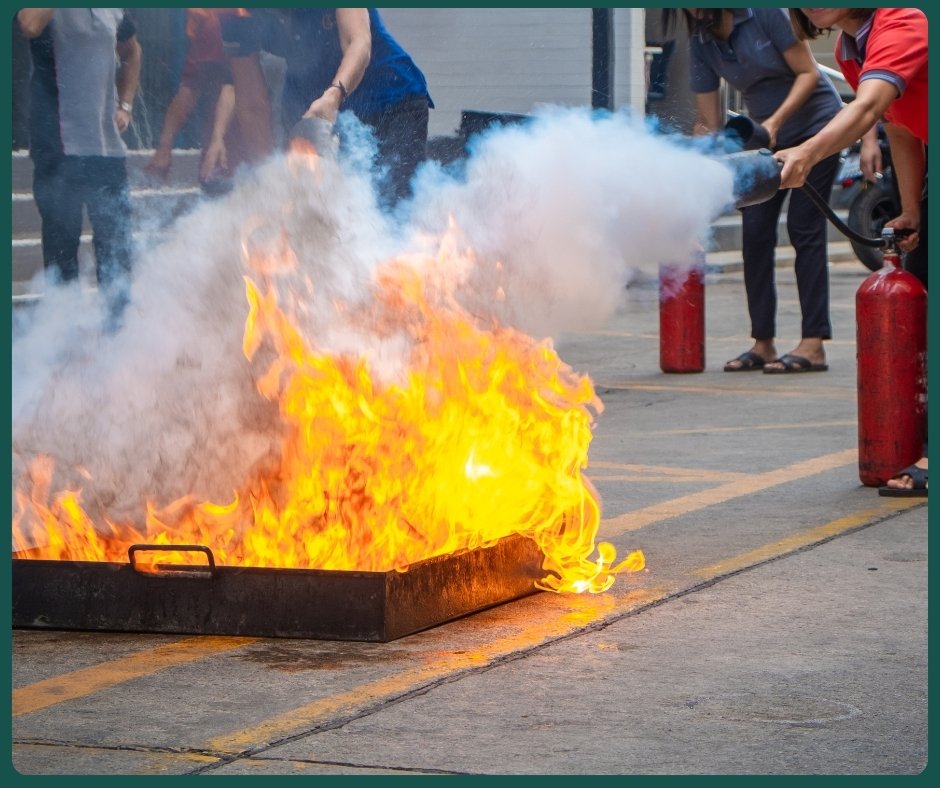
Why Standard Plans Fail Seniors (And How Yours Won’t)
Research shows generic fire drills overlook critical age-related factors:
- Cognitive Load: Stress impairs decision-making. Your solution: Anchor actions to muscle memory through quarterly drills.
- Reduced Strength: 60% of seniors can’t open stuck windows. Your solution: Install egress windows with easy-slide levers.
- Sensory Delays: Smell/touch sensitivity declines. Your solution: Use interconnected alarms that trigger bed shakers.
Expert Insight: “Seniors who practice adapted drills reduce escape time by 41% compared to those following generic plans.”
— Dr. Evan Hirsch, National Institute on Aging Safety Research Center
Wrapping It Up: Are You Fire-Smart or Fire-Risky?
Fire safety isn’t about fear — it’s about being prepared. A few smart upgrades, clear planning, and regular check-ins can mean the difference between danger and peace of mind.
Fire safety planning might feel overwhelming initially, but here’s the truth: every single step you take dramatically reduces your risk while boosting your confidence. You don’t need to tackle everything at once — start with one room, one safety check, or one piece of technology this week.
What’s your current fire safety situation? Are you fire-smart or discovering you might be fire-risky? Have you already made some improvements, or are you realizing it’s time for an upgrade?
Frequently Asked Questions (FAQs)
- Why are seniors at a higher risk for fire-related injuries and fatalities?
- Seniors face a higher risk due to a combination of factors, including age-related physical changes (decreased mobility, impaired vision and hearing), cognitive impairments (memory loss, dementia), and certain behaviors or living conditions. These factors can make it harder for them to detect a fire, react quickly, or escape safely. Statistics show that older adults are significantly more likely to die in a fire compared to the general population.
- What are the most common causes of fires in senior homes?
- The most common causes include cooking-related incidents (unattended cooking, grease fires), careless smoking (especially in bed), heating equipment malfunctions or misuse (space heaters too close to combustibles), and electrical issues (frayed cords, overloaded outlets, old appliances). Clutter and unattended candles can also contribute to fire risks.
- How often should smoke alarms be tested and batteries replaced in a senior’s home?
- Smoke alarms should be tested monthly. Batteries should be replaced at least twice a year, typically when daylight saving time begins and ends. For optimal safety, consider installing smoke alarms with 10-year sealed batteries or those connected to the home’s electrical system with battery backup.
- What special considerations should be made for seniors with hearing or vision impairments regarding smoke alarms?
- For seniors with hearing impairments, specialized smoke alarms that use flashing strobe lights or vibrating bed shakers are highly recommended. For those with vision impairments, alarms with loud, clear verbal alerts can be beneficial. It’s also important to ensure these alarms are properly installed and maintained.
- What is the importance of a fire escape plan for seniors, and what should it include?
- A fire escape plan is crucial for seniors, as it provides a clear course of action during an emergency. The plan should include at least two escape routes from every room, a designated outdoor meeting place, and a clear path to safety free of obstructions. For seniors with mobility issues, the plan should identify a designated helper and practice evacuation routes that accommodate their needs. It’s vital to practice the plan regularly.
- How can caregivers help ensure fire safety for their senior loved ones?
- Caregivers can play a vital role by regularly checking smoke alarms, ensuring clear escape routes, educating seniors on safe cooking and heating practices, and addressing electrical hazards. They should also help develop and practice a fire escape plan, assist with home safety assessments, and connect seniors with community fire safety programs and resources.
- Are there any new technologies that can enhance fire safety for seniors?
- Yes, several new technologies can enhance senior fire safety. These include smart smoke detectors that send mobile alerts to caregivers, AI and IoT integrated systems for faster and more accurate detection, automatic shut-off devices for cooking appliances, and Personal Emergency Response Systems (PERS) that can alert emergency services in case of a fire. Residential sprinkler systems also offer significant protection.
- Where can I find local resources or programs for senior fire safety?
- Local fire departments are excellent resources, often offering free home safety assessments, educational materials, and smoke alarm installation assistance. Community groups and senior centers may also host fire safety workshops. National organizations like the U.S. Fire Administration (USFA) and the National Fire Protection Association (NFPA) offer programs and resources, such as the Fire-Safe Seniors Program and Steps to Safety Program, which can be implemented locally.
References
- [1] U.S. Fire Administration (USFA). Fire Safety for Older Adults. https://www.usfa.fema.gov/prevention/home-fires/at-risk-audiences/older-adults/
- [2] National Fire Protection Association (NFPA). Home fire victims by age and gender. https://www.nfpa.org/education-and-research/research/nfpa-research/fire-statistical-reports/home-fire-victims-by-age-and-gender
- [3] Fitchburg, WI. Fire Safety for the Elderly. https://fitchburgwi.gov/491/Fire-Safety-for-the-Elderly
- [4] U.S. Consumer Product Safety Commission (CPSC). Older Americans Are More Likely to Suffer Fatalities from Falls and Fire. https://www.cpsc.gov/Newsroom/News-Releases/2022/Older-Americans-Are-More-Likely-to-Suffer-Fatalities-from-Falls-and-Fire-CPSC-Report-Highlights-Hidden-Hazards-Around-the-Home
- [5] National Fire Protection Association (NFPA). Safety tips for older adults. https://www.nfpa.org/education-and-research/home-fire-safety/older-adults
- [6] Canada Safety Council. Home Fire Safety for Seniors – What Family Members Can Do. https://canadasafetycouncil.org/home-fire-safety-for-seniors-what-family-members-can-do/


